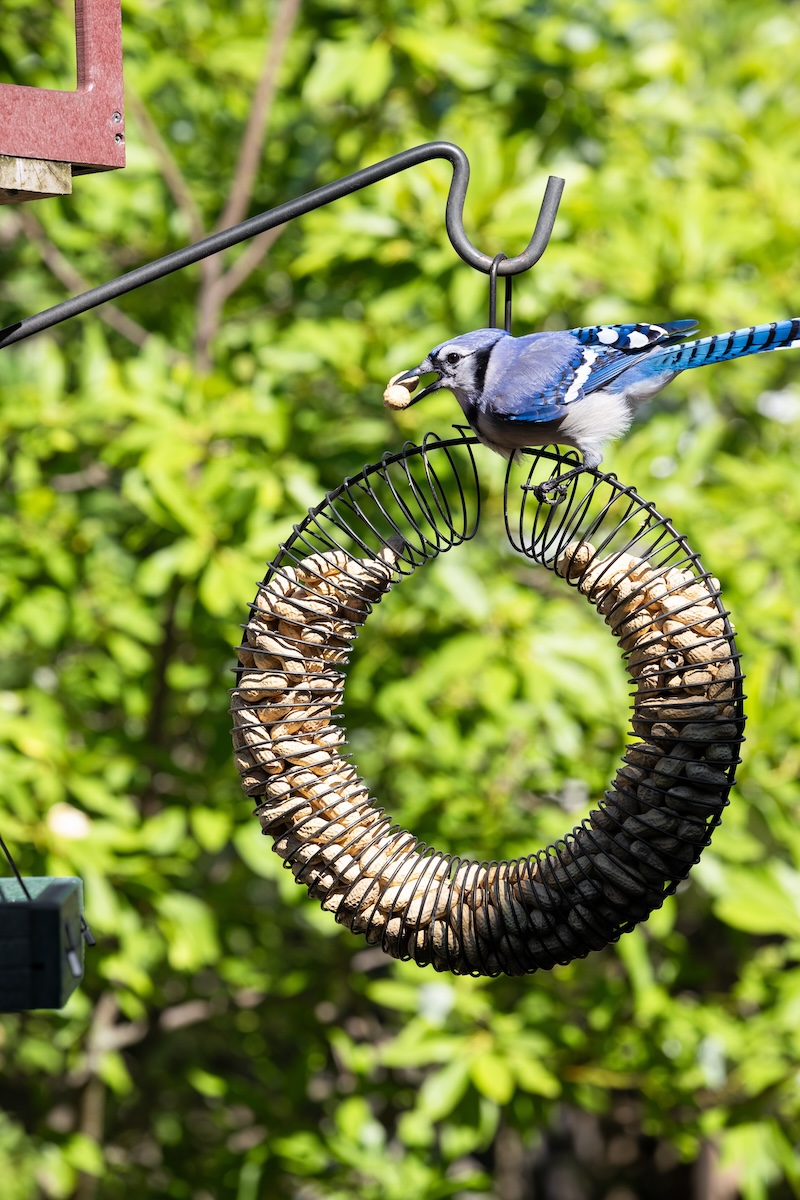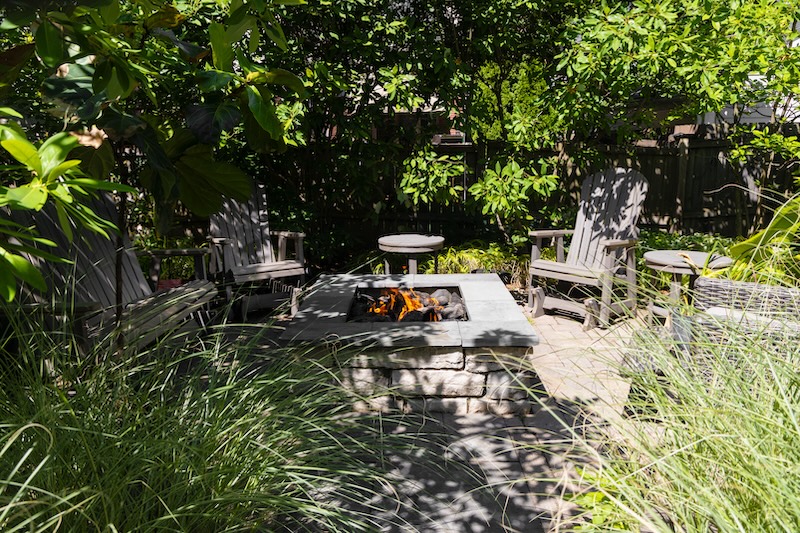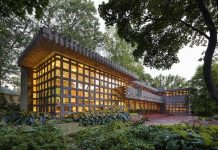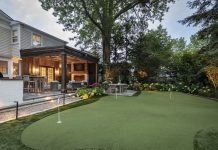A beautiful green-and-gold steel sign in the front yard at Jeremy and Diana Caverlyтs Birmingham home often stops passersby in their tracks. The marker signifies that the property is a . Winged visitors also draw the neighborsт attention.
тPeople stand near our yard all the time to watch the variety of birds we attract,т Jeremy says.
Jeremy and Diana purchased their 1947 home, located near 14 Mile and Southfield roads, in 2021. Since then, theyтve transformed the back and side yards into a bird, bee, and butterfly haven.
The family, including 11- and 13-year-old daughters, previously lived in Detroitтs Brush Park neighborhood. тWhen this house popped up, we made an offer immediately; Jeremy hadnтt even seen it yet,т Diana says.
The landscaping featured hydrangeas as well as arborvitae for privacy. тIt was a typical Birmingham lawn,т Jeremy says. Before long, the pair had transformed it into a natural habitat, installing some 15 bird feeders and mixing in with the original plants a lot of flowers and plants indigenous to Michigan.

The couple created their retreat to provide food, water, and cover for wildlife and to help to balance the ecosystem. If youтre creating a pollinator-friendly habitat, then youтre essentially helping with the planetтs food sources. Most food, the Caverlys share, comes from flowering plants, and flowering plants need a pollinator to reproduce.
тWhen people create a pollinator habitat in their own yard, no matter the size т ours is only 20 by 50 feet т it makes such a difference,т Diana says. тItтs spectacular and helps reduce stress.т
Six months ago, the bird buffs extended their passion for feathered friends threefold by purchasing , a 35-year-old bird-feeding, garden, and nature store in Bloomfield Hills.
тWe fell in love with the business and knew there was potential for more,т says Diana, who by day is global chief strategy officer for the marketing company . Jeremy runs and manages Backyard Birds with Mark Thousand, a longtime store employee. тThe Backyard Birds owner wanted to sell to someone who would pass the legacy forward and respect it, not reinvent it,т Diana says. тHeтs been great in making sure the transition is as smooth as possible and we maintain everything that customers have loved about Backyard Birds.т The couple plan to create a larger online presence as well as in-store programs and classes and bring in additional nature-related merchandise.
Considering their home as a lab of sorts, the Caverlys know of what they speak. Ask them just about anything about their storeтs seeds, bird feeders, or birdhouses, and theyтll give you sound advice. From installing purple martin homes in customersт yards to providing just the right shelled peanut for blue jays, theyтre as knowledgeable about native garden how-tos and bird facts as a hungry goldfinch is at discerning the difference between thistle and sunflower seeds.
Here, the Caverlys provide tips on how to create your own wildlife habitat т whether tiny or expansive т to attract pollinators.

Patience pays off
тItтs an ecosystem, so you have to wait a couple of weeks or months for things to happen,т Jeremy says. Trial and error is the name of the game, they say. тYou learn by doing,т Diana says.
Take it easy on yourself
тYou donтt have to plant everything,т Diana says. тConsider a foundation feeder with mixed seeds.т And hanging plants тare really easy and a big draw.т According to Diana, orioles, woodpeckers, red-winged blackbirds, cowbirds, cardinals, finches, hummingbirds, blue jays, grosbeaks, nuthatches, and dark-eyed juncos visit them.
Favorite plant sources
Jeremy observes that native plants are used to the local ecosystem, so you donтt have to invest a lot into making the garden look good. тThey require less maintenance and tend to be heartier, doing well in your soil and sunlight conditions.т He and Diana purchase plants mostly at farmers markets and . тWe bought wonderful salvia at the ,т Jeremy says.
Pollinator besties
Black-eyed Susans, purple coneflowers, lavender, herbs, salvia, wild indigo, sage, wisteria, clematis, and trumpet vine attract pollinators. тBee balm is our favorite. They are magenta and beautiful. They have a life of their own and really take off,т Diana says.
Tough love
The Caverlysт trumpet vine is a magnet for hummingbirds, but it can be very invasive and needs to be trimmed back and tended to regularly, Diana says.

Rein in the rain
Jeremy suggests creating a rain garden for capturing, treating, and infiltrating stormwater runoff to reduce flooding. тThatтs in our plans.т
Size doesnтt matter
Thereтs no need for a large space. If you have just a small patio or balcony, consider rail-mountable hooks or patio bases for bird feeders.
Now you see them
Consider ultraviolet-reflective decals for your windows that are near bird-feeding areas. тWe sit inside looking out a south-facing window and can see birds really well. They donтt see us so we can take great photos,т Jeremy says.
Critter control
Jeremy recommends a to deter raccoons and squirrels from climbing on your feeders.
Want to create a natural habitat at your home? The National Wildlife Federation offers several tips at .
his story originally appeared in the August 2024 issue of ЯуИлСљКЯВЪЭМПтзЪСЯ magazine. To read more, pick up a copy of ЯуИлСљКЯВЪЭМПтзЪСЯ at a local retail outlet. Our will be available on Aug. 6. And click hereЬ§to see more metro Detroit interiors.Ь§
|
| Ь§ |
|








